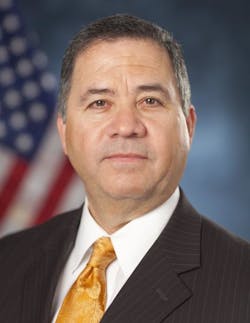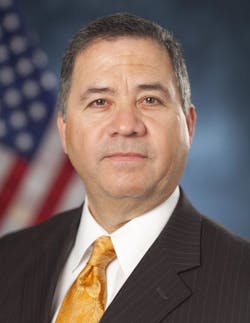Aguilar’s comments, provided as part of testimony before the U.S. House of Representatives’ subcommittee on trade back on May 17, illustrate the ongoing challenges of trying to ensure the safety and security of hundreds of billions worth of imports and exports to and from – trade that totaled $233 billion and $182.9 billion, respectively, for the month of April alone according to the Bureau of Economic Analysis (BEA).
Look at it from another angle: In 2011, CBP processed nearly $2.3 trillion in trade – a 10.5% increase over fiscal year 2010 – through 329 ports of entry, processing over 100 million cars, buses, trucks, trains, vessels and aircraft arriving at and within U.S. borders annually.
“We are striving to create trade processes that are consistent and harmonized across operations at all ports of entry so that U.S. importers and exporters can operate in an environment defined by predictability and uniformity,” noted Aguilar. “And we are developing systems and processes that recognize and reflect the operational realities of modern business.”
That’s the rub, of course – developing systems that help CBP screen this massive influx and outflow of trade without significantly impeding it.
[Just take a look at the challenges inherent in security U.S. seaports in the clip below – a clip that also provides a short history lesson concerning one aspect of the War of 1812 as well.]
One CBP’s toughest struggles to date revolves around the transition from its old Automated Commercial System (ACS) to the new ACE format – an effort to create what Aguilar called a “single window” through which companies electronically provide all information needed to screen cargo coming in by land, sea, or air for security, health, and safety risks, while ensuring compliance with U.S. trade laws.
And Aguilar admitted this effort has been anything but smooth. “Not very long ago, we found ourselves at a turning point with ACE [as] the program was suffering from management challenges and governance issues,” he explained. In fact, “in 2010, the program was placed on the Office of Management and Budget’s (OMB) list of 26 troubled federal information technology (IT) projects.”
Over the last two years, though, CBP managed to get things back on track, to the point where, this March, ACE rail and sea manifest capabilities were extended to all direct arrival U.S. rail and sea ports. Today, with 85% of the rail and sea carrier community are already using or preparing to use ACE, Aguilar said CBP is on track to decommission its old ACS legacy system for those two modes by the end of the current fiscal year.
[Here’s an overview from CBP of how ACE is supposed to work.]
Yet he readily admits CBP isn’t wearing rose-colored glasses where this effort is concerned, because hampering the efficient flow of goods – no matter how well intended the reasons – comes with a very big downside.
“There is still a tremendous amount of work to be accomplished in order to realize our ‘single window’ vision to support the U.S. government’s need to ensure safety, security, and compliance of our international trade, and also to realize benefits to industry such as faster processing, speedier clearance, and increased certainty in our processes,” Aguilar said.
“With a large and growing volume of goods and people to process, CBP must perform its responsibilities efficiently to avoid delaying shipments, increasing costs and creating inefficiencies for U.S. business,” he stressed. “Indeed, modern business practices often rely on ‘just-in-time’ delivery [and] delays in necessary shipments of products can derail or shut down business.”
Amen to that. Let’s hope CBP maintains this view as the agency continues to perform its vital mission of ensuring the safety and security of the trade crossing our borders.

